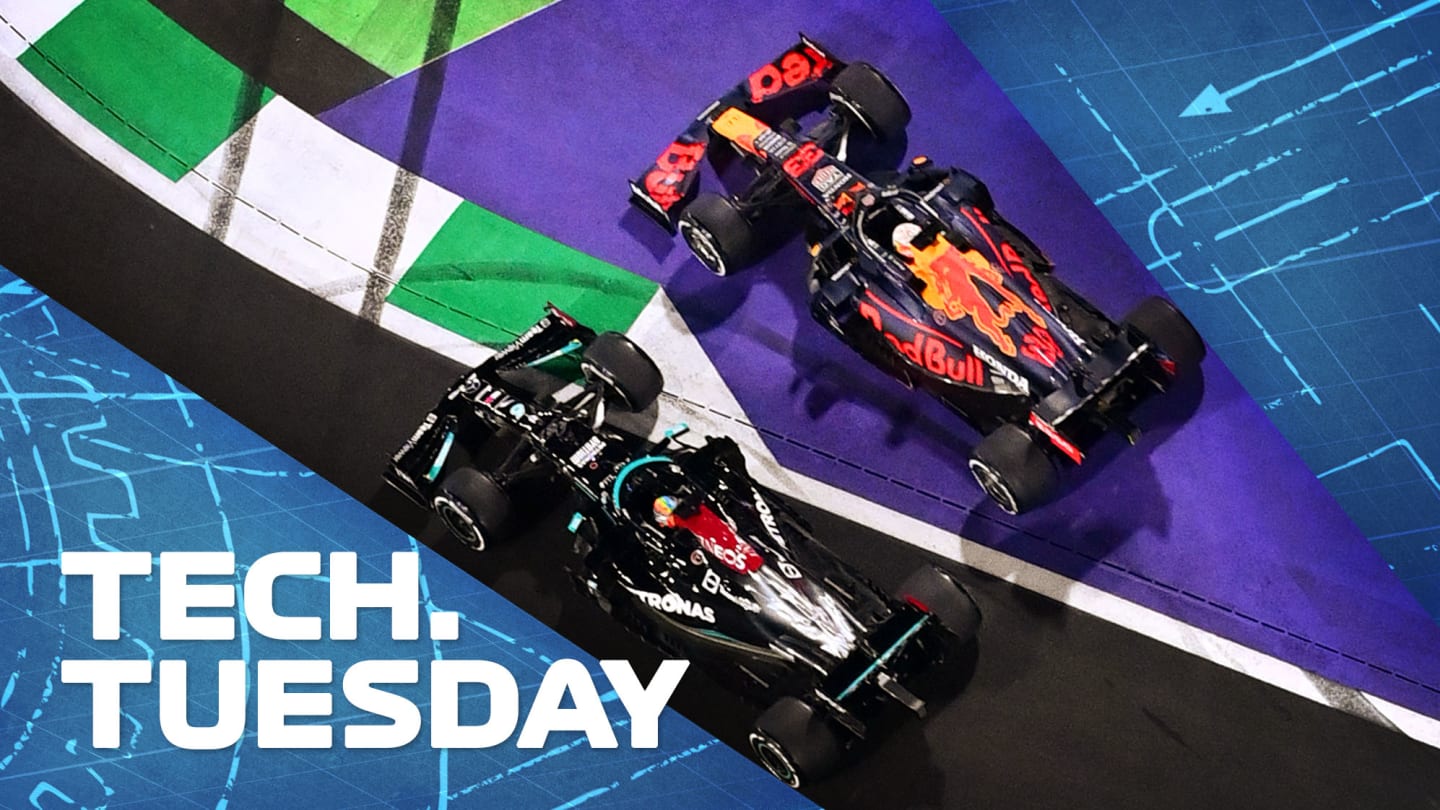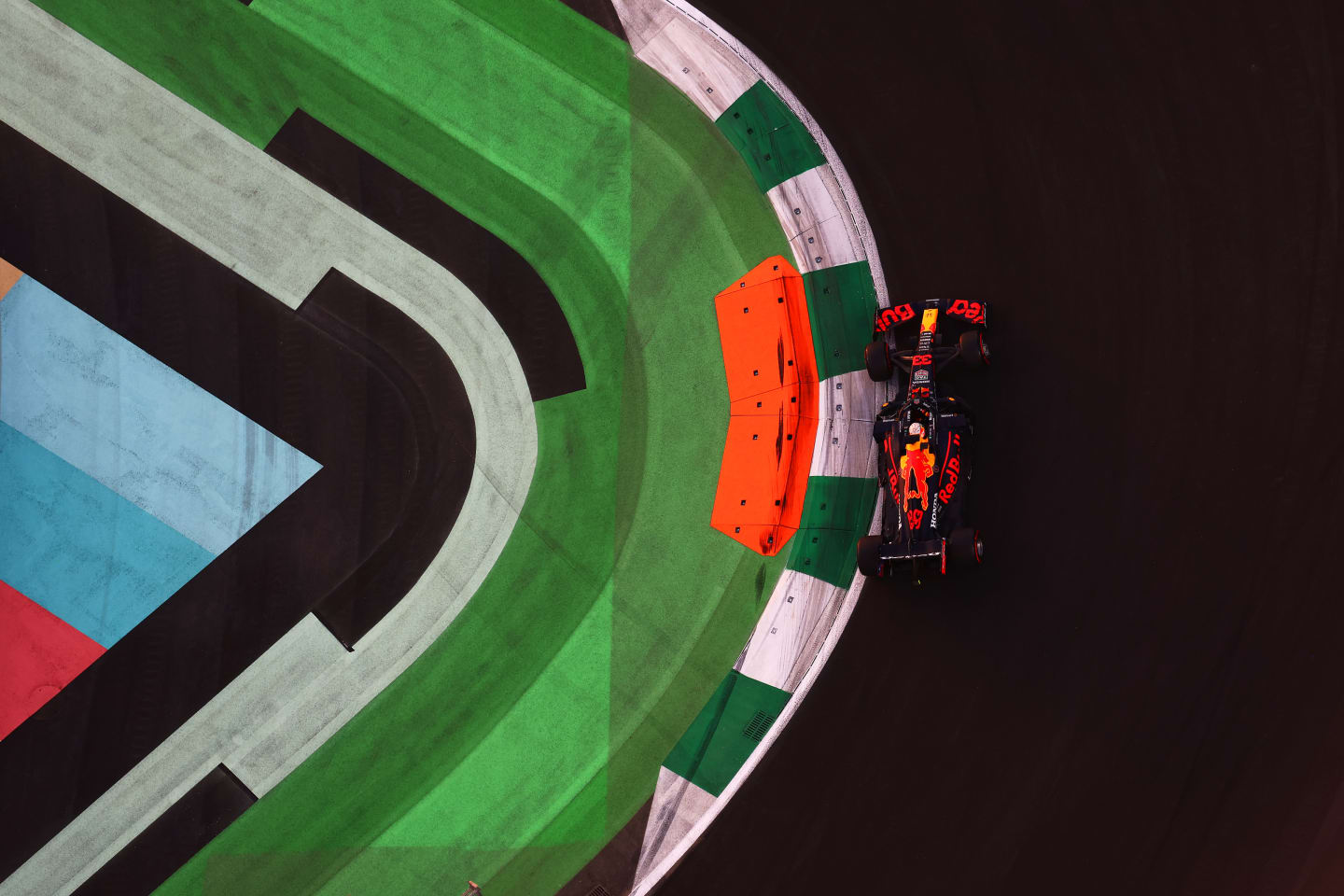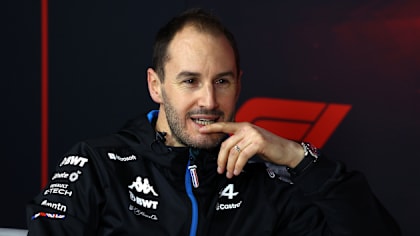
Feature
TECH TUESDAY: Red Bull or Mercedes – which car will suit Abu Dhabi better, as the title battle goes down to the wire?

Share

Equal on points, one race in Abu Dhabi this weekend decides all. Whichever of Lewis Hamilton or Max Verstappen beats the other here is the 2021 world champion. As much as this amazing season has been about the contest between two all-time great drivers, it’s also been about their cars. Rarely, if ever, has there been an occasion where two such different concepts of machine have proved so incredibly evenly-matched as an average over the season.
As the dawning realisation has been made by many fans that which is the faster car varies from track to track or even day to day, so it’s natural they are intrigued by which will have the edge in the winner-takes-all finale of Abu Dhabi.
The cars are diametrically opposed in the inherent strengths and weaknesses of the aerodynamic philosophies, with the Red Bull’s high-rake design favouring downforce at the cost of drag, and the Mercedes low-rake the opposite.
At Jeddah that distinction was very clear, with the Red Bull consistently faster through the sector one sequence of turns which are actual corners and through the similarly demanding Turn 22, the Mercedes making those losses up down the straights and through the flat-out kinks.

Verstappen was able to take a surprise victory in Abu Dhabi 12 months ago
Abu Dhabi has a mixture of demands with low drag-rewarding sectors one and two and a tricky third sector which rewards downforce. There have been changes to the layout ahead of this year’s event, but that generalisation holds true.
Typically, the challenge during a qualifying lap of Abu Dhabi is balancing how much to take from the tyre in the fast sweeps of the first sector and how much to keep in reserve so the rears are not too hot in the more stop/start final sector. Because of the nature of the tyres, it’s not a circuit where you can be truly flat out for the whole lap even in qualifying.
This could be good news for Red Bull, as their car has several times this season shown better control of rear temperatures than the Mercedes. This was the defining feature which allowed the Red Bull to have the race-winning edge as recently as Austin.
As a generalisation, we might expect the Mercedes to be quicker in the first two sectors, the Red Bull in the final one. How that all balances out, though, can change from one day to the next. A different track temperature or track surface can completely change the hierarchy between the cars, so evenly-matched are they.

The Red Bull has managed its rear tyre temperatures better than the Mercedes this year
In Jeddah, the Mercedes was the quicker car in Friday evening practice. By qualifying Saturday evening, the Red Bull was generally faster through being able to get its tyres up to temperature on the first flying lap. Quite why the change no one was certain, Mercedes suggesting it could have been to do with the stronger breeze.
The way the two cars work their tyres is quite different. This is based around their respective aerodynamic traits, with the low-rake Mercedes generally having a stronger front end but weaker rear. The ’21 floor limitations took significantly more downforce away from the rear of the Mercedes than that of the Red Bull, and that has tended to make balancing the tyre usage front to rear more difficult.
TECH TUESDAY: The banned features that will make a big impact on 2022's wheel-to-wheel action
The high-rake Red Bull will also tend to move its aero balance further forwards as it slows, helping to quickly generate the front tyre temperatures the Mercedes sometimes struggles to reach.
In terms of horsepower, the lower-mileage PU5 in Hamilton’s car showed a big advantage in its initial race of Brazil and still appeared to carry some of that advantage in Jeddah. Although Abu Dhabi is not as power-sensitive a track as Jeddah, more is always better.
The destiny of the world title could yet turn upon the state of the early evening Abu Dhabi track surface on Sunday.
Race Highlights: 2020 Abu Dhabi Grand Prix
YOU MIGHT ALSO LIKE
News ‘There’s no magic’ – Oakes outlines Alpine’s approach to 2025 season as teams get set for ‘big compromise’

Video MUST-SEE: How new Ferrari driver Hamilton’s first day at Maranello unfolded
Video LIVESTREAM: Watch all the action from Round 4 of the 2025 F1 Sim Racing World Championship
FeatureF1 Unlocked BARRETTO: Norris promised McLaren that 2025 would be his year, so is he ready to become World Champion?
.png)


